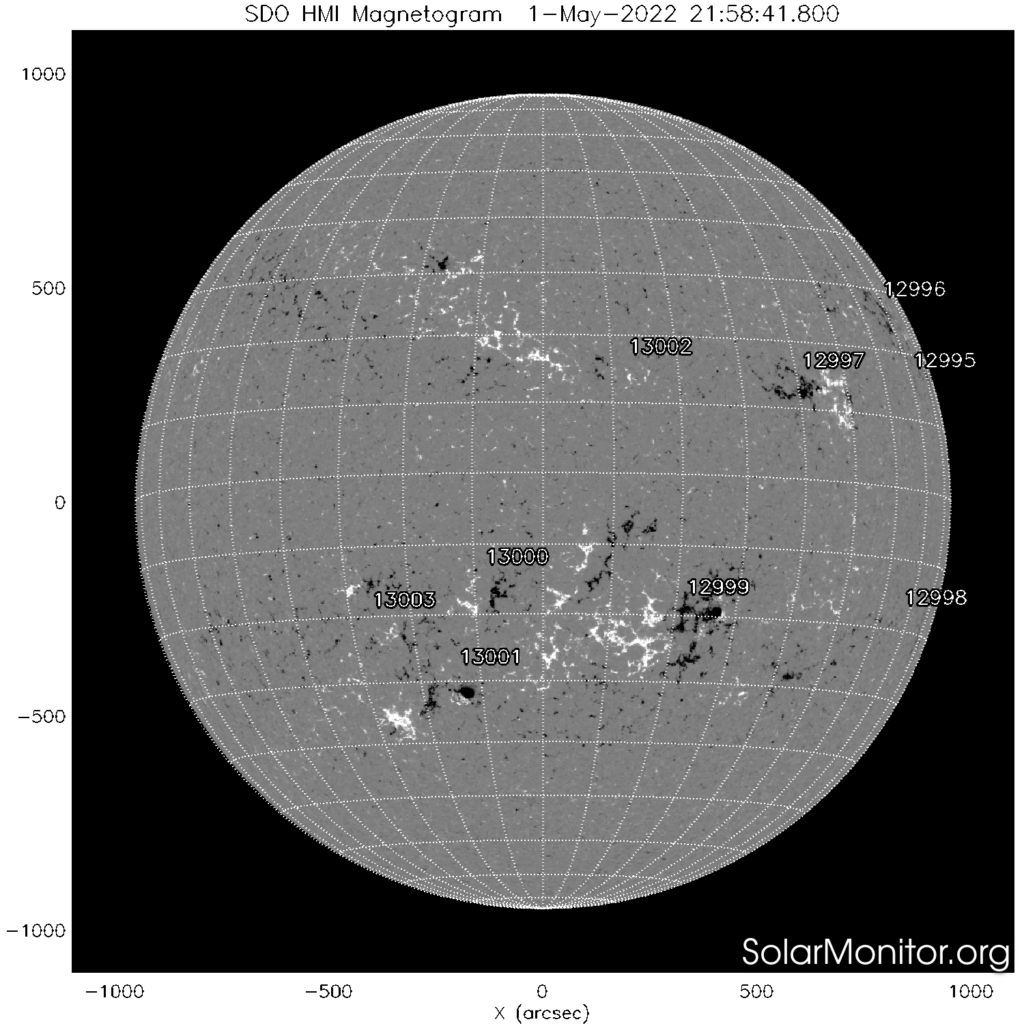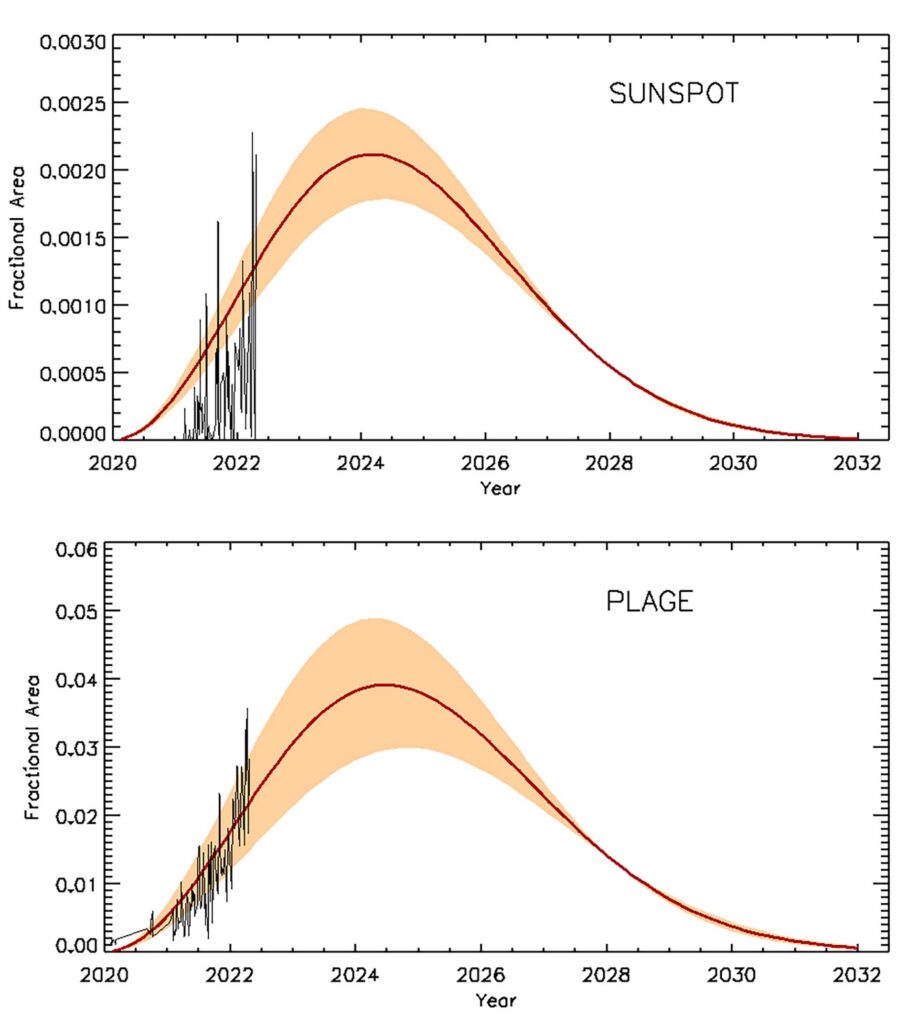
The model is empirically derived by combining and analyzing over 100 years of solar observations from different telescopes. We analyzed this long time series of data to mathematically describe two key properties of the Sun’s magnetic field: the faster the Sun’s activity increases at the start of a cycle, the more intense the cycle is (known as the Waldemeier effect), and that the strength of odd-cycles depends on the strengths of the previous even-cycle. To predict the strength of our current solar cycle 25, these findings are combined with the observations made during the even previous cycle 24. The prediction for plage and sunspot are illustrated in Figure.

Top panel: observed sunspot area (black curve) observed at the San Fernando Observatory (SFO) and the prediction for cycle 25 (red curve). Bottom panel: same as the top panel, but for plage area. The shadow red area defines the lower and upper limits for the prediction. The SFO sunspot and plage area were kindly provided by Angela Cookson and Gary Chapman.
As a result, we anticipate that cycle 25 (began in December 2019) will peak in 2024 and last for about 12 years, slightly longer than cycle 24. We also found that, in terms of sunspot and plage area coverage, the amplitude of cycle 25 will be similar or slightly higher than cycle 24. Figure shows that the model is in agreement with the sunspot and plage coverages measured at the San Fernando Observatory at the beginning of cycle 25.
Reference:
Prediction of Sunspot and Plage Coverage for Solar Cycle 25
Penza, Valentina; Berrilli, Francesco; Bertello, Luca; Cantoresi, Matteo; Criscuoli, Serena
The Astrophysical Journal Letters, Volume 922, Issue 1, id.L12, pp., 2021.




More Stories
Scientists Develop New Model to Estimate Solar Irradiance Variation Over the Last Five Centuries
La grande aurora su Roma del 4 febbraio 1872
When it rains, it pours on Proxima Centauri b